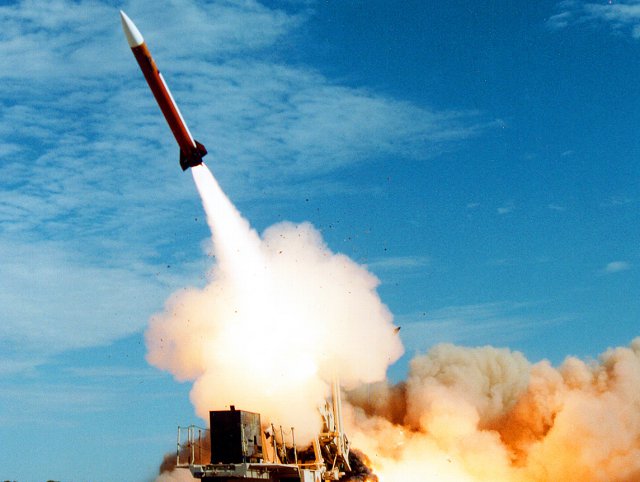It was a bad day for enemy cruise missiles and aircraft. In a series of tests, the newly upgraded Raytheon Patriot Integrated Air and Missile Defense system proved it can destroy cruise missiles and aircraft with different kinds of interceptors.
The combat-proven Patriot system, upgraded with a suite of enhancements collectively known as Post-Deployment Build 8, successfully detected, tracked and engaged a cruise missile surrogate target in a July 8 test. It then destroyed the target with a GEM-T interceptor. A few minutes later, the PDB-8 Patriot repeated the process with a tactical fighter aircraft target, and destroyed the plane using a PAC-3 MSE interceptor.
“Using an interceptor mix to destroy different threats is cost-effective and provides commanders with operational flexibility,” said Ralph Acaba, Raytheon vice president of Integrated Air and Missile Defense. “This latest success keeps the Patriot’s PDB-8 upgrade on track for fielding in 2018.”
During the test, which took place in a very challenging radar environment, the threats were manually engaged by soldiers using the shoot-look-shoot method of fire. This meant that after the first interceptor was fired, Patriot soldiers “watched” to see if the cruise missile or aircraft was destroyed. If it wasn’t, then a second interceptor would be fired. In both cases the target was destroyed by the first interceptor.
The PDB-8 upgrade, which was funded by the 13-nation Patriot partnership, allows Patriot to take advantage of many of the PAC-3 MSE’s advanced capabilities. PDB-8 also builds on the lessons learned from combat engagements by five nations, 1,400 flight tests and 3,000-plus ground tests.
The PAC-3 MSE destroys threats via the force of the collision. The lower-cost, combat-proven GEM-T interceptor flies close to threats and explodes, destroying the missile or aircraft in the process.
U.S. Army Soldiers from the 11th Air Defense Artillery Brigade’s 3rd Battalion, 43rd Air Defense Artillery Regiment, based in Ft. Bliss, Texas, conducted the engagement. This is the final of four developmental tests for PDB-8, proving that this build is ready for operational testing by the U.S. Army Test and Evaluation Command.
Source: Press Release

